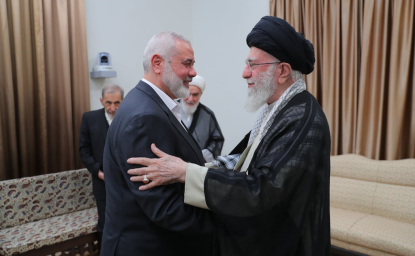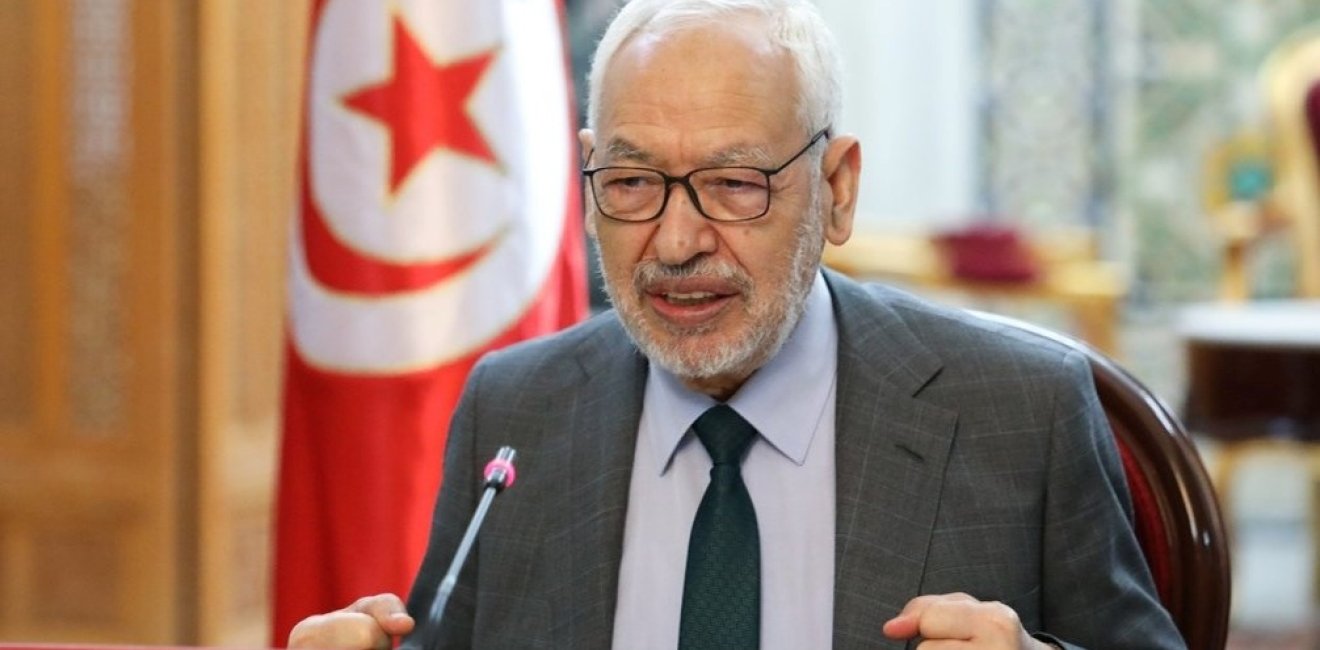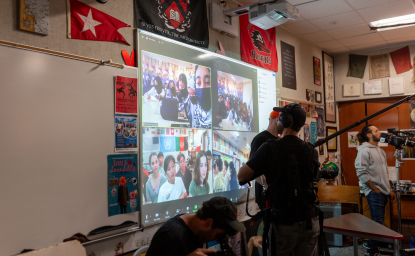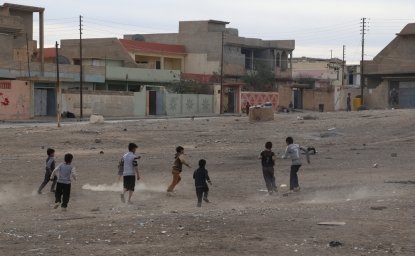The two rival faces of political Islam gained ground in Tunisia after the 2011 Arab Uprising, which ended autocratic rule. A transition government granted amnesty to leaders of Islamist movements—both militant and non-violent—and allowed them to openly preach or gain legal status as a party. Ennahda grew into one of the most powerful political parties, while three different jihadi groups employed violent tactics to derail the government and mobilize support for Islamic rule.
Tensions between the rivals was reflected in 2013, when al Qaeda in the Lands of the Islamic Maghreb condemned Ennahda. “Don’t be deceived by the people who call to democracy by decorating it under the name of the truth and give it a religious garment,” it warned. Jihadists exploited the government’s economic challenges, including unemployment, to gain public sympathy. As jihadi assassinations and bombings increased, protesters in 2013 blamed Ennahda for failing to reign in the Sunni militants.
In 2014 elections, Ennahda lost 20 seats in parliament. It gradually evolved politically and, in 2016, renounced political Islam. “I am a Muslim democrat and they [jihadists] are against democracy,” said Rachid Ghannouchi, the Ennahda cofounder. The division among disparate Islamist factions deepened as their goals and tactics increasingly differed. In 2017, separate extremist groups carried out 47 attacks on government and civilian targets across the country. Ennahda made a bit of a political comeback in the 2019 election when it lost 17 seats, but still won a plurality vying against more than 20 parties.
Both militant and non-violent Islamists faced major setbacks. In 2021, Ennahda was forced out of politics by President Kais Saied, who banned the party and ordered the arrest of Ghannouchi and other party leaders. The government’s aggressive counterterrorism also eroded jihadist capabilities. Militants launched only four attacks in 2022.
Ennahda
Since it was founded in 1981, Ennahda has evolved from a religious opposition group repressed by the government into one of the most influential forces in Tunisian politics. A pivotal turning point was the 2011 Arab Uprising, which forced an autocratic leader from power and allowed opposition parties such as Ennahda to run for political office. Ennahda won pluralities in the 2011 and 2019 parliamentary elections, and it served as a kingmaker in forming a coalition government with secular parties in 2014. It was the most successful Islamist party in the Middle East, although its seats in parliament diminished with each poll. In 2021, Ennahda was forced out of politics, replicating the experience of other Islamist movements in the region. Its leaders were once again imprisoned.
Ennahda’s saga is a microcosm of the tensions between Islamist movements and secular political parties across North Africa and the Middle East. As the movement evolved, it even tried to shed its official Islamist identity. “We are Muslim democrats who no longer claim political Islam,” Rashid Ghannouchi, Ennahda’s leader, said at the 2016 party congress. Ennahda had historically made concessions to secular parties. But Ghannouchi’s speech triggered skepticism among political rivals and foreign observers. “The party’s internal culture is likely to remain Islamist or Islamist-inflected for a long time,” insisted Monica Marks, a scholar of Islamist movements.
In mid-2021, President Saied fired the prime minister, dissolved parliament, and assumed full executive power amid protests over the government’s economic mismanagement and poor response to the COVID-19 pandemic. Critics called Saied’s autocratic politics a coup, and new protests erupted against him. The divisions between Islamist and secular forces in Tunisia only deepened when Saied appointed a new prime minister and magistrates by decree and later introduced a new constitution. Opposition parties, including Ennahda, boycotted the late-December 2022 parliamentary election. They argued that a boycott was “better than participating in an electoral farce aimed at having the president expand his powers.” In 2023, Ghannouchi was tried for “plotting against state security” for a video warning of civil war if opposition parties, both Islamist and secular, were banned from politics. He was sentenced to one year in prison.

Factoids
- Participated in three elections – 2011, 2014, and 2019
- Won 89 seats in 2011, 69 seats in 2014, and 52 in 2019
- Formed three coalition governments with diverse secular parties
- Led two of the three governments between 2011 and 2021
Timeline of Ennahda
1981: Rachid Ghannouchi and Abdelfattah Mourou founded the Movement of Islamic Tendency (MTI) in April. Ghannouchi and his followers were arrested in July.
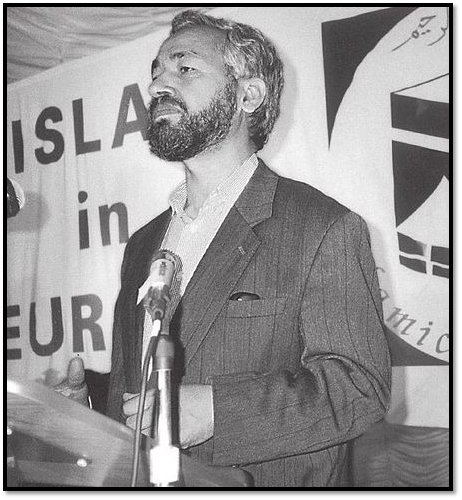
1989: MTI adopted the name Ennahda in a failed bid for legal recognition. It was banned from running from parliament, so Ennahda members ran as independent candidates. They won more than 10 percent of the vote, according to government figures, but did not win any seats. The party claimed election fraud, alleging that it had won a greater percentage of the vote.
1991: The government banned Ennahda and arrested thousands of members. Key leaders went into exile, mainly in Europe. It was marginalized for two decades.
2011: After the Arab uprising ousted the government of President Ben Ali, Ennahda leaders returned to Tunis and mobilized the party to run for office. It won nearly 40 percent of the vote and formed a coalition government with two secular political parties. Hamid Jebali, Ennahda secretary general, became the first post-authoritarian prime minister.
2013: Two secular members of parliament were assassinated in separate attacks attributed to Ansar al Sharia. Tens of thousands of people protested in Tunis, which led to the fall of Jebali’s government.
2014: Tunisia adopted a democratic constitution in January and then held another election in October. Ennahda came in second with 28 percent of the vote. Ennahda joined a governing coalition led by a secular party.
2016: Ennahda shifted its political association with religion. “We are Muslim democrats who no longer claim political Islam,” Ghannouchi declared.
2019: Ennahda nominated Abdelfattah Mourou, its first candidate, for president. Ennahda did not advance to the second-round and threw its support to Kais Saied, who won. Running against more than 20 parties, Ennahda came in first in the parliamentary election with only about 20 percent of the vote. It again formed a coalition with secular parties. Ghannouchi became the speaker of parliament, setting the stage for a divided government.
2020: Ghannouchi survived a no-confidence vote in parliament.
2021: Protests erupted nationwide over economic mismanagement and the government’s poor response to the COVID-19 pandemic. President Saied dissolved parliament, declared a state of emergency, and consolidated power. Ghannouchi decried Saied’s actions. More than 100 Ennahda leaders resigned from the party, accusing Ghannouchi of doing too little.
2023: Saied’s government imprisoned Ghannouchi as well as many other Ennahda leaders. The government also closed Ennahda party offices and banned its political meetings.
Militant Groups
Jihadism soared after the 2011 Arab Uprising, which toppled the autocratic government of President Ben Ali. Islamists were freed from prison and permitted to proselytize openly. Ansar al Sharia was founded in April 2011, just three months after the Arab Uprising. The group spread its message through in-person and online preaching. It exploited public frustration with poor economic conditions and provided public services–including street cleaning–to gain adherents.
Katiba Uqba bin Nafi, a jihadist movement affiliated with al Qaeda in the Lands of the Islamic Maghreb (AQIM), was formed in late 2012. It gained popular support by appealing to marginalized communities along Tunisia’s border with Algeria. The group began conducting assaults against Tunisian security forces in 2013. In 2014, an offshoot of Katiba Uqba bin Nafi declared allegiance to the Islamic State. The group adopted the name Jund al Khilafah Tunisia, and it also drew support from marginalized communities in northwest Tunisia.
Katiba Uqba bin Nafi and Jund al Khilafah competed with one another for power and influence, even as they sporadically launched attacks on civilians and security forces. In 2015, a lone-wolf gunman, allegedly inspired by jihadist ideology, opened fire on a beachside resort—killing 38 civilians, mainly tourists—in Sousse. “The terrorists have targeted the state, the revolution, and the Islamic principles but we will prevail over them,” Ghannouchi said at a press briefing after the attack.
Tunisia’s coalition government, which included Ennahda, launched an ambitious counterterrorism campaign in the northwest and improved border security. With U.S. financial support, its counterterrorism program succeeded in decreasing attacks. In 2017, extremists carried out 47 attacks; in 2022, they were linked to only four operations. But the North African country has not fully eradicated jihadism.
Ansar al Sharia
Ansar al Sharia was founded in 2011 by Seifallah Ben Hassine, a Tunisian militant who had reportedly worked with Osama Bin Laden in Afghanistan. He was later captured in Turkey, extradited to Tunisia, and sentenced to 43 years in prison. Ben Hassine was granted amnesty and released from prison after the 2011 Arab Uprising.
Ansar al Sharia espoused a hardline Salafi jihadist ideology and sought to impose sharia in Tunisia. In 2013, a leader said, “The state we envision is based on God’s laws. This is not up for discussion.” Ansar al Sharia combined community service, proselytization, and violence to achieve this goal, and it was an ideological rival to the non-violent Ennahda movement.
Ansar al Sharia had historic links to al Qaeda. Between 2011 and 2015, the group launched sporadic attacks–including suicide bombings–against Tunisian security forces. It organized a protest over a controversial video about the Prophet Mohammed in 2012, in which Tunisians stormed the U.S. Embassy. The group’s activity diminished in 2015, after its founder was killed in an airstrike.
Katiba Uqba bin Nafi
Katiba Uqba bin Nafi (or the Fighting Group of Uqba ibn Nafi, a general in the seventh century who conquered parts of North Africa) was established in December 2012. It affiliated with al Qaeda in the Lands of the Islamic Maghreb (AQIM), which is headquartered in Algeria. It operated primarily in the northwest Kasserine and Kef regions, traditionally areas marginalized by the central government. It recruited in Kasserine, where unemployment was twice as high as the national average.
In 2013, Katiba Uqba bin Nafi launched a sporadic attacks on security posts throughout the northwest. The government deployed more forces and arrested fighters planning attacks and smuggling weapons. By 2018, Katiba Uqba bin Nafi began to lose territory and popular support. It has not claimed responsibility for any attack since 2019.
Jund al Khilafah
Jund al Khilafah (or Soldiers of the Caliphate) was founded in 2014 after fighters of Katiba Uqba bin Nafi defected and declared allegiance to ISIS. It competed for fighters and territory in northwest Tunisia with Katiba Uqba bin Nafi, while also attacking civilians and security forces. The group targeted and killed civilians to intimidate local populations. It conducted kidnappings and assassinations of both security forces and civilians. In 2018, Tunisia’s counterterrorism campaign limited Jund al Khilafah operations.
Islamic State of Iraq and Syria
Up to 6,000 Tunisians joined ISIS between 2013 and 2019, with more than 20,000 others attempting to join the largest jihadi movement in the Middle East. the Tunisian government began to crackdown on jihadists in 2013. The creation of a caliphate in 2014 appealed to young, well-educated Tunisians, many of whom had grown disillusioned when the Arab Uprising failed to improve their employment and economic prospects.
Foreign Fighters in Iraq and Syria by Country of Origin (2015)
Source: Official estimates from respective governments. Unofficial estimates are by the Soufan Group, "Foreign Fighters: An Updated Assessment of the Flow of Foreign Fighters into Syria and Iraq," December 2015.
Factoids
- Tunisian jihadists were responsible for the assassination of Ahmad Shah Massoud, an Afghan anti-Taliban leader, in the run-up to 9/11
- In 2015, a gunman opened fire on a resort in Sousse, killing 38 tourists in the most lethal attack in Tunisian history.
- Between 3,000 and 7,000 Tunisians joined the Islamic State, the largest percentage of foreign fighters from any country.
Timeline of Militant Groups
Note: This is not a comprehensive list of all jihadist activity in Tunisia.
2000: Seifallah Ben Hassine and Tarek Maaroufi founded the Tunisian Combat Group, an affiliate of the Salafist Group for Preaching and Combat (GSPC) in Algeria.
2001: Two militants affiliated with the Tunisian Combat Group assassinated Ahmad Shah Massoud, leader of the Northern Alliance–an Afghan rival to the Taliban and al Qaeda. Osama bin Laden reportedly organized the murder in the run-up to the 9/11 attacks. The Tunisian Combat Group has been defunct since the mid-2000s, when its two founders were imprisoned in Tunisia and Belgium.
2011: Seifallah Ben Hassine, also known as Abu Ayyad al Tunisi, established Ansar al Sharia in April. Tunisia’s democratic transition allowed Ansar al Sharia to openly proselytize.
2012: Protestors stormed the U.S. Embassy in Tunis in September. The Tunisian government blamed Ansar al Sharia. Katiba Uqba bin Nafi was founded in December.
2013: The Tunisian government blamed Ansar al Sharia for separate attacks that killed two members of parliament in Tunis. In August, the Tunisian government designated Ansar al Sharia a terrorist organization.
2014: In May, Katiba Uqba bin Nafi attacked the Minister of the Interior’s house in Kasserine, killing four policemen. Jund al Khilafah Tunisia was founded, after members of Katiba Uqba bin Nafi defected and declared allegiance to ISIS. Ansar al Sharia was blamed for at least 10 attacks against Tunisian security forces.
2015: In March, two militants affiliated with ISIS opened fire on tourists at the Bardo Museum in Tunis. They killed 22 during the three-hour siege. In the largest jihadist attack in Tunisia’s history, a gunman murdered 38 tourists in Sousse in June. Tunisia declared a state of emergency. In July, the U.S. military claimed to have killed Ben Hassine, the leader of Ansar al Sharia, in an airstrike in northern Mali. In November, an ISIS-affiliated jihadist killed two Presidential Guard members in a suicide attack.
2016: Tunisian security forces prevented an attack by Tunisian nationals affiliated with ISIS-Libya in March. The operation killed 49 suspected terrorists, 13 security forces, and 7 civilians. The Tunisian Army killed the leader of Jund al Khilafah in November.
2018: In October, a lone female suicide bomber wounded 20 in the heart of Tunis. No group claimed responsibility.
2019: In June, two ISIS-affiliated jihadists launched twin suicide attacks in Tunis. One police officer and one security officer were killed.
2020: In March, two suicide bombers killed a police officer and injured six when they detonated their explosives across the street from the U.S. Embassy in Tunis. Jund al Khilafah beheaded a shepherd, who was reportedly suspected of collaborating with the government. His body was found in December near the Algerian border.
2021: Tunisian forces arrested the leader of Katiba Uqba bin Nafi.
Author


The Islamists
Learn more about Hamas and how it relates to similarly aligned organizations throughout the region. Read more

Explore More
Browse Insights & Analysis
Israel Expands Operations on Multiple Fronts: Perspectives on the Conflict
